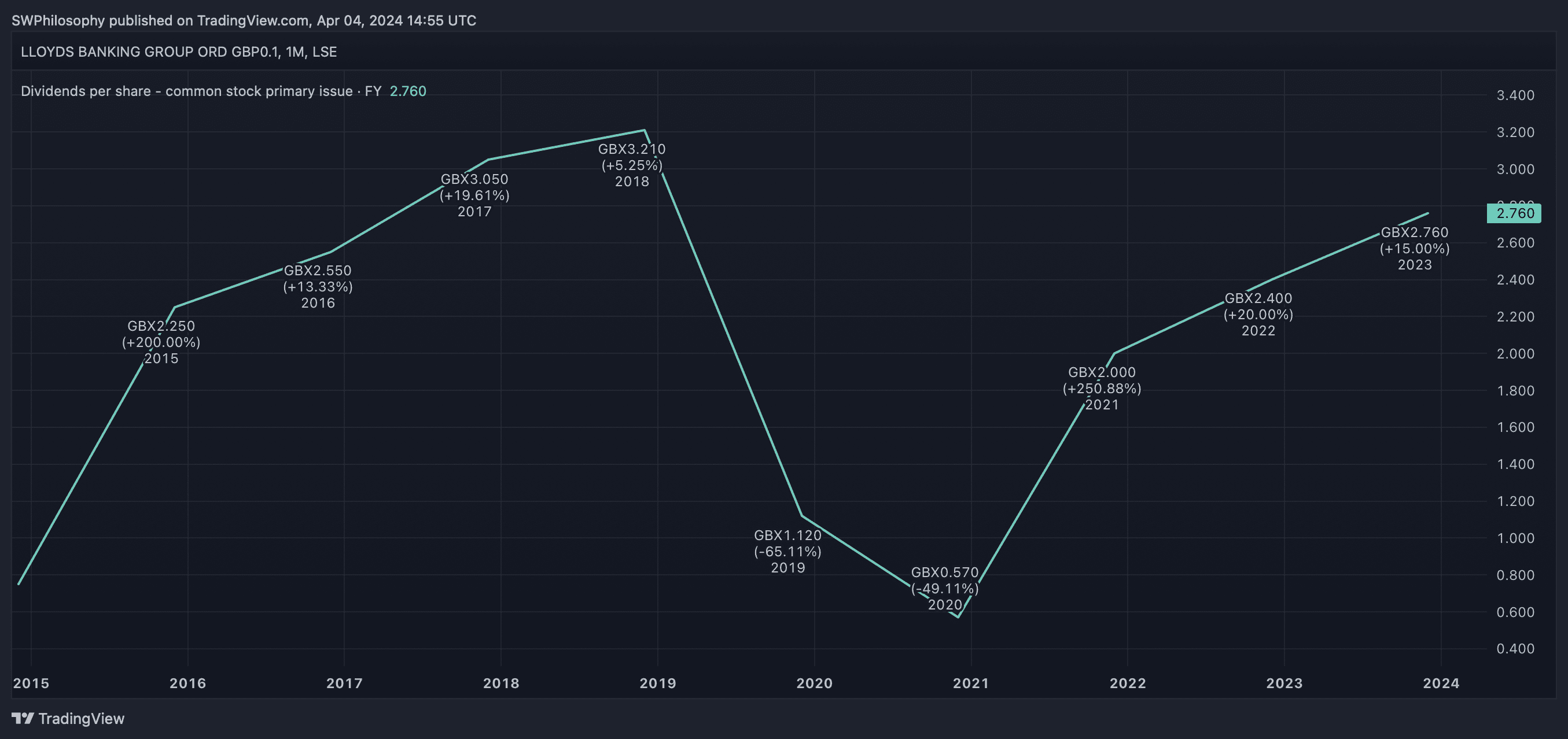

Image source: Getty Images
Shares in Lloyds Banking Group (LSE:LLOY) currently have a 5% dividend yield. But shareholders should be careful – the company’s history when it comes to distribution is anything but consistent.
I think investors looking for passive income can do better. The company’s preferred shares – which trade under the ticker symbol LLPD – have a higher yield and a more consistent track record.
Dividends
Over the last 10 years, Lloyds’ common shareholders have had a volatile time in terms of passive income. The company’s dividend has been up and down.

Created at TradingView
There’s nothing intrinsically wrong with that and varying fortunes are to be expected in a cyclical industry like banking. But the returns from the preferred shares have been very different.
These preferred shares – the ones with the catchy name Lloyds Banking Group 9.75% PRF IRR (LSE:LLPD) – have been remarkably consistent. Each year, they’ve returned exactly 9.75p per share.
There’s a good reason for that – preferred stock is a very different type of asset to common shares. And there are some important advantages investors should consider in looking for passive income.
Preferential treatment
Preferred shares work differently to common shares when it comes to income. With common equity, dividends are paid out of whatever cash is left over once the company has met its obligations.
With preferred stocks, dividends are one of the company’s obligations. Lloyds is required to pay a fixed income to these owners before it can pay distributions to common shareholders.
That means preferred shareholders are less likely to see their payments cut than owners of common stocks. It’s not impossible – the company might pay no dividends at all – but it’s less likely.
The main downside to preferred stock is that a fixed payment doesn’t go up. So when the company does well – as it did in 2023 – owners of preferred shares don’t stand to benefit in the same way.
A passive income opportunity?
At £1.51, the stock comes with an eye-catching 6.5% dividend yield. That’s higher than the 5% currently on offer from the common shares after their 12% rally since the start of the year.
Lloyds is coming off a strong year, when high interest rates helped the bank reach record profits. Given this, I find it hard to see how the dividend’s going to be higher in future than it is now.
On top of this, income from preferred shares is also much more predictable. There’s no issue around how much the company’s going to pay out, only whether it’s going to pay dividends at all.
Together, these two features mean I’d much rather buy the preferred stock than the common shares. I’d expect better and more consistent passive income.
Investment returns
Investors considering buying preferred shares in Lloyds should be aware that the liquidity levels are much lower than they are with the common stock. That could make selling them difficult.
From a passive income perspective though, the point isn’t to sell the stock – it’s to keep it and collect dividend payments. And with this in mind, I think the shares look like a good opportunity.





